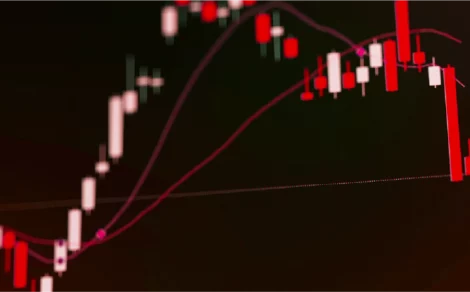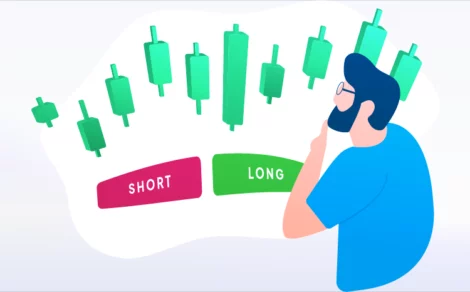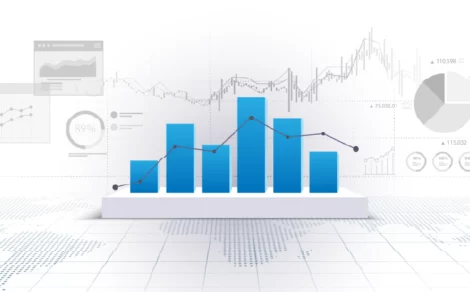Toruscope » Online Trading » Different Types of Trading in the Stock Market
If you’ve ever dipped your toes into the stock market, you know it’s not a one-size-fits-all space. Some people are glued to charts all day. Others forget they even own stocks until a dividend alert pops up.
That’s because there isn’t just one way to trade or invest. There are many.
And figuring out what suits you best starts with understanding the different types of trading in stock market.
The Big Picture: Why Trading Types Matter?
Let’s say two people are buying the same stock. One sells it within hours. The other holds on for years. Are they doing the same thing? Not even close.
One’s probably an intraday trader trying to catch small moves. The other? Maybe a long-term investor or a swing trader. Different goals. Different mindsets. Different risk levels.
Understanding these trading types in share market:
- Choose the approach that fits your time, risk, and temperament
- Avoid the trap of copying someone with a completely different game plan
- Build strategies that actually make sense for you
Let’s explore what’s out there.
1. Intraday Trading – The High-Speed Chase
Intraday trading, also called day trading, is like sprinting in the world of stock trading. You buy and sell stocks within the same day. No positions are carried overnight.
What it looks like:
- Constantly watching price charts
- Quick decision-making
- Targeting small price movements for multiple trades a day
Who it’s for:
People who love action. Fast thinkers. Those with the time and focus to track markets during trading hours.
Example:
Buying shares of a top gold company in the morning based on a chart breakout and selling it before lunch for a ₹5 profit per share.
Reality check:
It can be profitable, but it’s also intense. Risk is high. So is emotional pressure.
2. Swing Trading – The Middle Ground
Swing trading sits between intraday and long-term investing. Instead of selling within hours, you hold trades for a few days or even weeks. The idea is to catch a “swing” in price based on technical trends or news triggers.
What it looks like:
- Holding stocks for short-to-medium timeframes
- Using technical analysis (like moving averages or patterns)
- Less stressful than intraday, more dynamic than investing
Who it’s for:
People who can’t monitor markets all day but want to be more hands-on than just buying and holding.
Example:
Buying producing gold stocks after a price correction, expecting them to recover within 10 days.
3. Positional Trading – The Strategic Wait
This is long-term investing with a tactical twist. Positional traders might hold stocks for months, riding out ups and downs with faith in the bigger picture.
What it looks like:
- Ignoring short-term volatility
- Relying on strong fundamentals
- Timing entries based on economic cycles or sector trends
Who it’s for:
Those who have full-time jobs or don’t want to obsess over daily market movements.
Example:
Buying stocks in India related to infrastructure before the government announces a big project.
Why it works:
Patience often pays off. Markets reward those who can zoom out.
4. Scalping – Micro Profits, Macro Volume
Scalping is the most intense form of trading. Think of it as intraday trading but turbocharged. Scalpers look for tiny price changes and make dozens (or even hundreds) of trades in a day.
What it looks like:
- Lightning-fast trades (sometimes seconds long)
- Tiny gains per trade but many trades
- Relies on advanced platforms and quick reflexes
Who it’s for:
Experienced traders with nerves of steel, deep pockets, and great infrastructure.
Example:
Buying and selling the same gold miner stock five times in an hour for ₹0.50 profit per trade.
Warning:
For most people, this is too fast, too risky, and too technical.
5. Options Trading – Playing the Probabilities
Options trading is a whole world on its own. You’re not buying stocks directly; you’re buying contracts about those stocks. These contracts let you bet on price movements without owning the underlying asset.
What it looks like:
- Buying or selling calls and puts
- Predicting where prices will go (and when)
- Complex, but flexible
Who it’s for:
Traders who love strategy, hedging, and leverage. Not ideal for complete beginners.
Example:
Using options to hedge your portfolio against a possible drop in gold production stocks during earnings season.
Cool part:
You can profit even when stocks don’t move if you play the time decay game right.
6. Delivery Trading – The Classic Long Haul
This is the old-school style. You buy shares, they get delivered to your demat account, and you hold them until you feel like selling days, months, or years later.
What it looks like:
- No rush to sell
- Focus on company fundamentals
- Used by investors more than traders
Who it’s for:
Almost everyone, especially new investors. It’s slow, steady, and doesn’t need constant attention.
Example:
Buying long-term gold ETFs or streams and royalty companies to hedge against inflation.
Why it’s safe:
You actually own the stock. No leverage. No overnight risk.
Final Thoughts: Pick Your Path, Not Someone Else’s
So, what did we learn?
There are many different types of trading in stock market, and none of them is “better” than the other. It all depends on your personality, your schedule, your risk appetite and honestly, your patience.
Whether you’re diving deep into different types of stock trading or just testing the waters, always start small. Understand the game before going all in.
Trading isn’t about finding the fastest way to grow your money. It’s about finding the right way for you.
Ready to start trading or take your strategy to the next level? Open a Demat Account with Torus Digital and trade across all segments using high-speed APIs and cutting-edge tools for a seamless, pro-level experience.
FAQs
-
Which style of trading works best in the stock market?
There’s no universal winner, it depends on your time, risk appetite, and mindset. Intraday suits fast thinkers, while delivery trading works for long-term investors.
-
What’s the right way to start investing in stocks?
Start by opening a demat and trading account with a trusted broker like Torus Digital, research companies, and invest in fundamentally strong stocks. Begin small and learn as you go.
-
What are the three big stock exchanges?
Globally, the NYSE, NASDAQ, and Tokyo Stock Exchange are the major ones. In India, it’s the NSE, BSE, and MCX (for commodities).
-
Is trading online really better than offline?
Online trading is faster, cheaper, and gives more control. But some still prefer offline brokers for guidance and hand-holding.
-
Which trading method makes the most money?
All can be profitable but only with skill and discipline. No method guarantees returns. Consistency and risk control matter more than the type.
Related Reads
What is Slippage in Trading? Meaning, Causes & Impact Explained
In trading, timing and precision often define success. However, even when a trader believes...
By: torus
- 7 mins
- 01.Jul.2025
- 4(1)
- 97
What is an Option Contract?
Imagine having the flexibility to buy or sell shares at a fixed price, no...
By: torus
- 7 mins
- 01.Jul.2025
- 0(0)
- 43
Types of Financial Instruments You Should Know Before Investing
Before investing funds in any market, it is essential to understand what financial instruments...
By: torus
- 7 mins
- 01.Jul.2025
- 0(0)
- 39
What are Contracts for Difference (CFD)?
Contracts for Difference, commonly known as CFDs, are financial instruments that allow traders to...
By: torus
- 9 mins
- 01.Jul.2025
- 0(0)
- 39
Difference between Short Position & Long Position
Understanding the concepts of short and long positions is essential for anyone interested in...
By: torus
- 8 mins
- 01.Jul.2025
- 0(0)
- 38
Essential Trading Terminologies You Need to Know
Trading in financial markets opens a world full of opportunities. For many first-time investors,...
By: torus
- 8 mins
- 01.Jul.2025
- 0(0)
- 47
Disclaimer: The content provided in this blog is for informational purposes only and does not constitute financial advice or recommendations. The content may be subject to change and revision. Readers are encouraged to conduct their own research and consult with a qualified financial advisor before making any investment decisions. Torus Digital and its affiliates takes no guarantees whatsoever as to its completeness, correctness or accuracy since these details may be acquired from third party and we will not be responsible for any direct or indirect losses or liabilities incurred from actions taken based on the information provided herein. For more details, please visit www.torusdigital.com.
Tenneco Clean Air IPO Listing: Strong Market Debut with 27% Premium
Tenneco Clean Air India Ltd made a confident entrance into the public markets on...
By: torus
- 5 mins
- 19.Nov.2025
-
3.7(6)
-
283
Stock to Buy Today: November 19, 2025
The Indian stock market witnessed a mild decline on November 18, 2025, ending a...
By: torus
- 4 mins
- 19.Nov.2025
-
4.3(3)
-
283
Mirae Asset Infrastructure Fund NFO: A Sector-Focused Bet on India’s Growth
Mirae Asset Mutual Fund has launched a new equity scheme — Mirae Asset Infrastructure...
By: torus
- 4 mins
- 18.Nov.2025
-
4.3(6)
-
283
Emmvee Photovoltaic IPO: Shares Make Muted Market Debut, List Flat At ₹217
Emmvee Photovoltaic Power made a muted debut on 18 November 2025, listing flat at...
By: torus
- 3 mins
- 18.Nov.2025
-
3.7(6)
-
283








